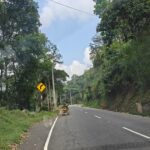As Nepal marks a decade since the devastating 2015 Gorkha earthquake, which claimed nearly 9,000 lives and destroyed 600,000 houses, disaster resilience remains a critical priority. The earthquake served as a reminder of the inadequacies of Nepal’s disaster preparedness and response mechanisms. It emphasized the need to shift from a reactive to a proactive approach. A decade later, it is essential to assess Nepal’s progress in Disaster Risk Reduction (DRR), the lessons learned, and the steps to build long-term resilience. With climate change intensifying disasters, a locally-led disaster preparedness approach is more important than ever.
Nepal is highly vulnerable to earthquakes, landslides, floods, fire, heatwaves, cold waves and so on, which have severely impacted its communities and the economy. Recognizing this, Nepal has adopted a community-led disaster preparedness strategy to safeguard lives and livelihoods, particularly among its most vulnerable populations. By empowering local communities with resources and decision-making authority, Nepal aims to build a society resilient to multiple shocks including climate crises.
Evolution of DRR Policies in Nepal
Nepal’s disaster risk reduction and disaster preparedness endeavors are guided by the Sendai Framework for Disaster Risk Reduction (SFDRR) which focuses on:
- Understanding the disaster risk
- Strengthening disaster risk governance
- Investing in disaster reduction for resilience
- Enhancing disaster preparedness through a “Build Back Better” strategy
In order to institutionalize DRR along three tiers of government, the Government of Nepal adopted key legal policies, including the National Disaster Risk Reduction and Management (DRRM) Act of 2017, the National DRR Policy, 2017, and the National DRR Strategic Action Plan (2018-2030). These instruments shifted Nepal’s efforts from reactive to proactive, assigning roles to all three tiers of governments. With the DRRM Act’s provision, the National Disaster Risk Reduction and Management Authority (NDRRMA) was established in 2019, taking the lead role for disaster risk reduction, disaster preparedness, response, and recovery.
Despite these policies, implementation remains a challenge. Following the 2015 earthquake, the National Reconstruction Authority (NRA) led recovery efforts, rebuilding over 800,000 private houses, 50,000 classrooms across 7,583 schools, 1,164 health institutions, and nearly 1,800 cultural monuments. However, coordination gaps led to multiple delays. This was evident during the 2023 Jajarkot earthquake, where 18%, or 14,537, of affected families had yet to construct temporary shelters even 16 months after the disaster, despite having Disaster Preparedness and Response Plans (DPRPs) in place. Such setbacks show the need for efficient implementation and localized leadership in effective preparedness and disaster response.
Shifting to Locally-Led Disaster Risk Reduction
Community-based disaster preparedness (CBDP) in Nepal has evolved since the 1990s, gaining momentum with the Hyogo Framework for Action (HFA) in 2005. A major policy shift in Nepal’s local disaster risk reduction came with the Local Disaster Risk Management Planning (LDRMP) guideline since 2011, along with the Local Government Operationalization (LGO) Act 2017. These decentralized disaster management responsibilities to local governments, enabling them to take a proactive role.
The key initiatives include the establishment of Local Emergency Operation Centers (EOCs) to coordinate disaster preparedness, including volunteer training, contingency planning, as well as preparing early warning systems and timely responses. EOCs work under the guidance of the Local Disaster Management Committee (LDMC) led by the mayor or chairperson of local governments. They enable resource mobilization (e.g., food, shelter, medical aid), while training local volunteers and pre-positioning emergency supplies, allowing communities to respond quickly when disasters strike. This model recognizes that effective emergency response depends on well-prepared local communities with knowledge, resources, and leadership, ensuring inclusivity and timely aid for vulnerable groups, such as women, children, and persons with disabilities.
The Increasing Threat of Climate Change in Disaster Risk
While earthquakes remain a major concern, climate change is amplifying floods, landslides, and extreme weather events. The September 2024 Rosi Valley floods, triggered by the heaviest rainfall in 54 years, caused NPR 46 billion (USD 335 million) in losses, 200 deaths, and disruptions to 24 hydropower plants, transmission lines, and power stations, leading to nationwide power shortages. Considering such incidents, Nepal must take into account the Intergovernmental Panel on Climate Change (IPCC) Sixth Assessment Report (2022), which highlights the need for climate-resilient infrastructure and adaptation strategies. Thus, disaster preparedness must align with climate adaptation efforts (action, directives, and policies) to withstand both natural hazards and climate crisis.
Early Warning Systems: A Proven Approach
One of Nepal’s most effective disaster preparedness tools is the Community-Based Early Warning System (CBEWS). Initially piloted by Practical Action in 2002 along the East Rapti River, CBEWS has since expanded to eight major river basins. These systems provide timely flood warnings, allowing communities to evacuate and minimize losses.
For instance, during the floods in the Karnali River Basin in 2017, early warning lead times improved from 2-3 hours to 7-8 hours, allowing timely evacuations. The Department of Hydrology and Meteorology has also introduced a three-day flood forecasting system to strengthen disaster readiness. This has created an opportunity for government and development partners to pilot and advance Early /Anticipatory Action initiatives in Nepal.
Challenges in Disaster Preparedness and Response
Despite notable progress, Nepal continues to face major challenges in disaster preparedness, included but not limited to:
- Delays in relief and reconstruction due to weak coordination and slow implementation
- Insufficient investment in DRR, with heavy reliance on external development partners. Nepal spent an average of USD 50 billion annually on post-disaster responses between 2012-2020.
- Weak coordination among government tiers, affecting response efficiency
- Marginalization of community-based initiatives with less attention and funding, limiting their impact
The Way Forward: Strengthening Nepal’s Disaster Resilience
To enhance disaster resilience, Nepal must strengthen local governments with the necessary technical resources, adequate funding, capacity building, and strengthening the LEOC/DRR Unit with dedicated and competent human resources aligning with environment and climate action sub/unit. NDRRMA must take a lead role in this endeavor. Further, DRR must be integrated into municipal and national development plans including all types of infrastructure for long-term sustainability. Expanding improvised EWS and flood forecasting tools is also essential to provide timely alerts and minimize losses in disaster-prone areas.
Lastly, the 2023 Jajarkot earthquake and 2024 Rosi floods exposed gaps in Nepal’s disaster risk management, emphasizing the need for better coordination, equipped with competent human resources and well-funded local action. By prioritizing early warning systems, risk-informed development, and local leadership, Nepal can build a safer and more resilient future for its communities. The lessons of the past decade must serve as a precedent to ensure that future disasters cause fewer casualties, less economic, social and environmental disruption, and greater preparedness at all levels of society.
Additionally, engaging local populations, civil society, and the private sector will create a more inclusive and effective response mechanism/framework. Thus, Nepal must invest in climate-resilient infrastructure, ensuring that buildings, roads, and hydropower plants can withstand disasters and minimize socioeconomic impacts.
Mr. Bishnu Prasad Kharel, Senior Advisor at CDM-Nepal, has over 20 years of experience with INGOs, UNDP, and SNV-Nepal. He has led regional programmes across South Asia in resilience, DRR, climate action, and governance. A key contributor to Nepal’s DRR policies, he has played an important role coordinating with federal ministries. He is also the founder of National Disaster Preparedness Network.





